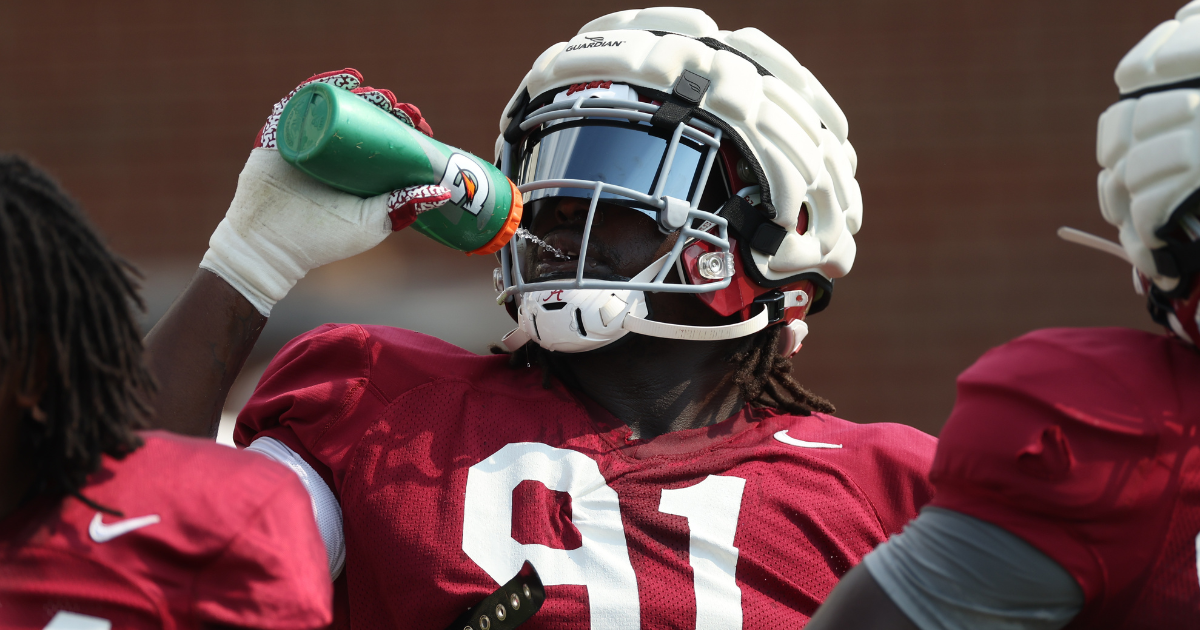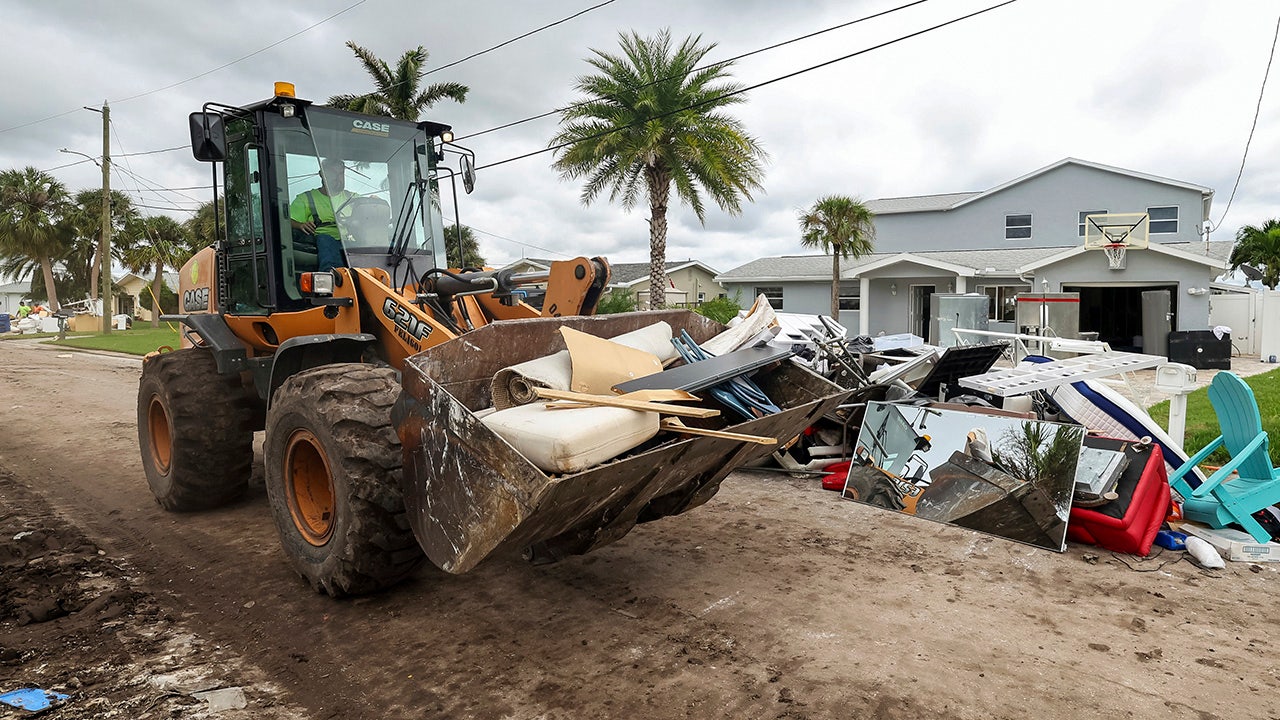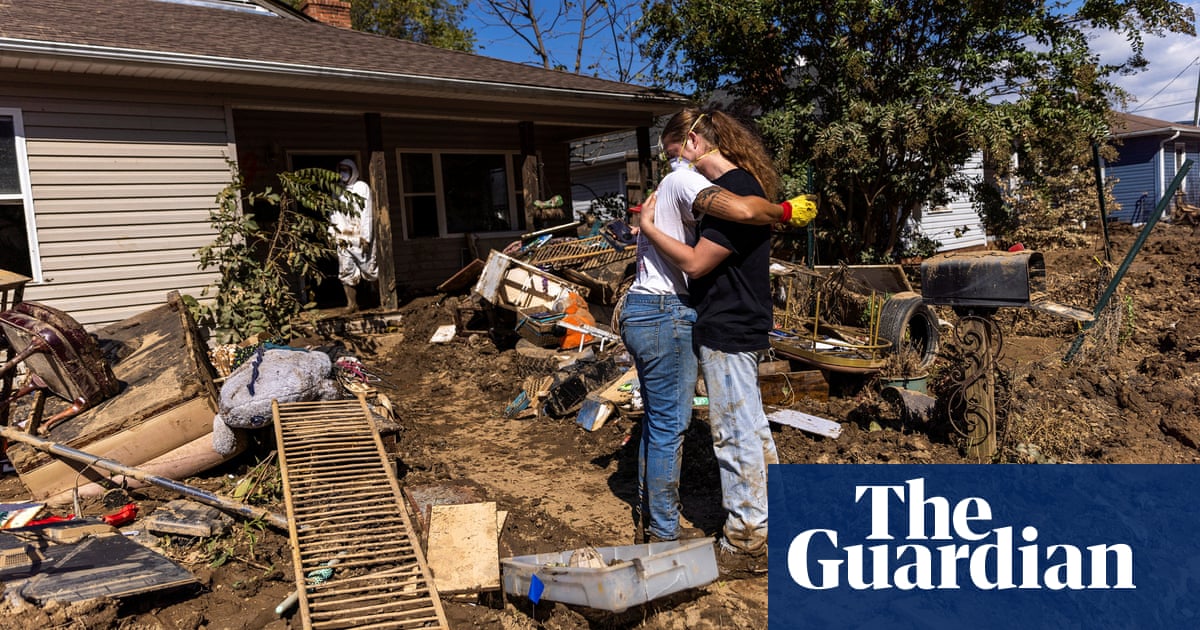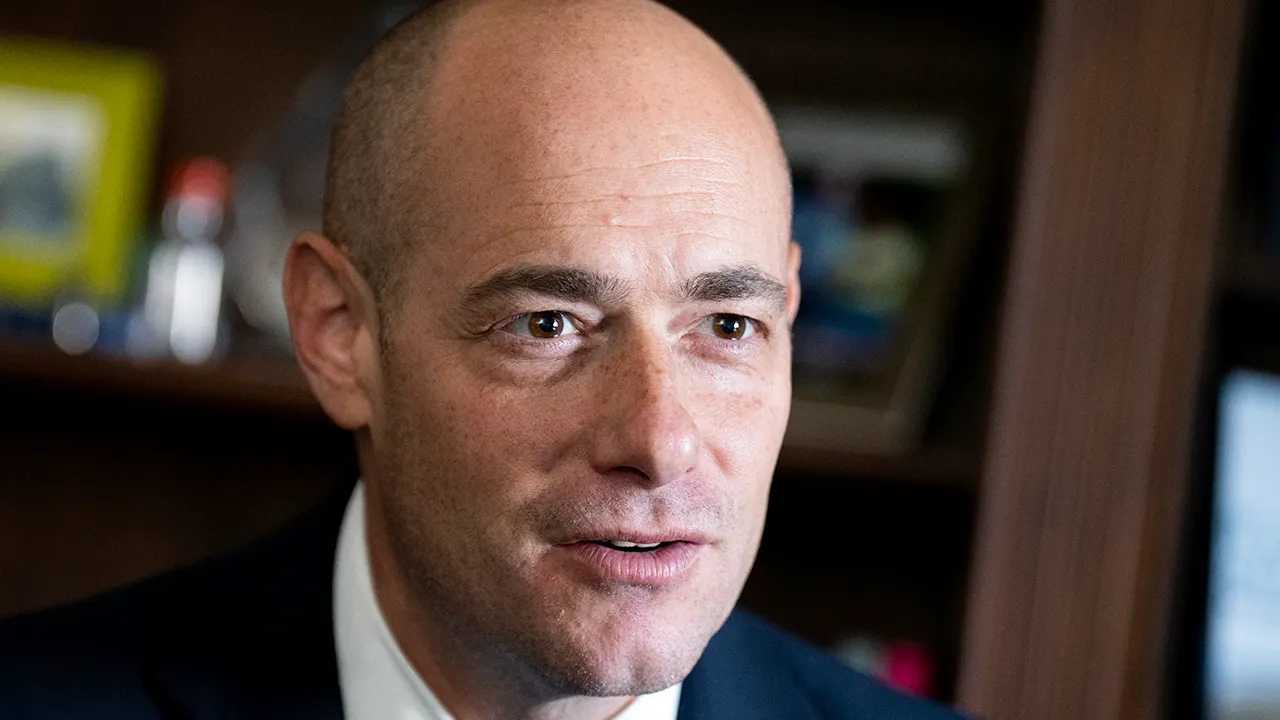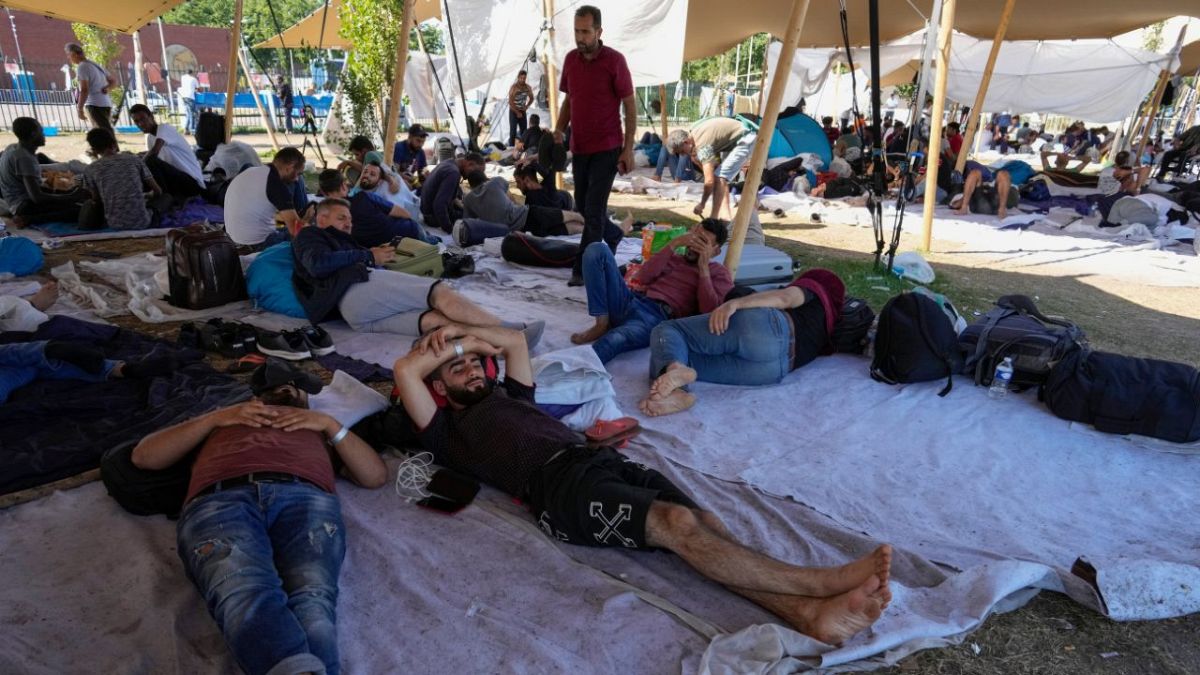World
Reporter's Notebook: Iran’s missiles strike Israel, and a deadly terror attack in Tel Aviv
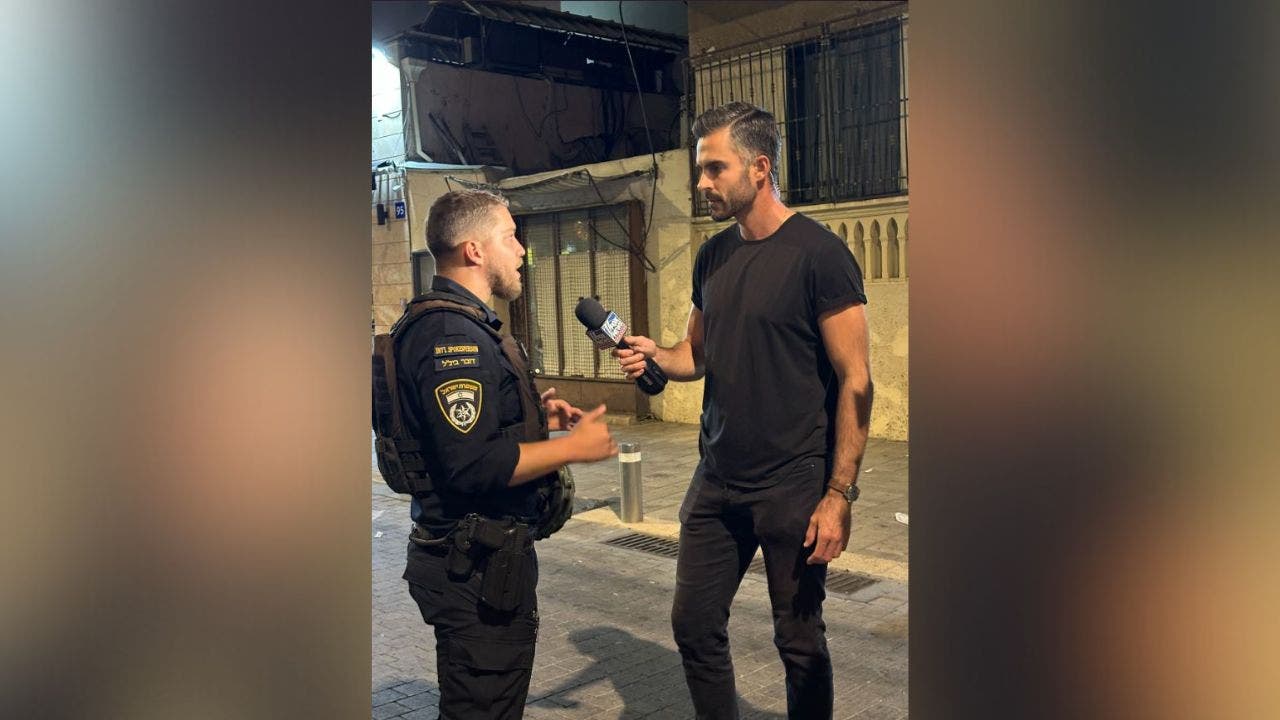
TEL AVIV, Israel – Sirens blare outside our hotel balcony.
An imminent ballistic missile strike from Iran looms, but the current alarm is different – more immediate, more dangerous.
It’s a terror attack in Jaffa.
The details are still emerging, but we know this much: Several people have already lost their lives.
In a rush, we load up our gear and protective equipment into our vehicle. Just as we’re pulling out of the hotel, orders from New York come through: Get back inside. They don’t want us on the road with Iran’s attack approaching.
FOUR AMERICAN HOSTAGES REMAIN IN HAMAS CAPTIVITY A YEAR AFTER OCT. 7 MASSACRE
Before my producer can even hang up, the car fills with a new sound: the blare of alarms. Iran has fired ballistic missiles – headed straight for us.
It takes about 12 minutes for a missile to travel from Iran to Israel. How far into those 12 minutes we are is anyone’s guess.
Our photographer, doubling as our driver, floors the accelerator, weaving through traffic as we race back to the hotel.
We make it back and join about two dozen others in the hotel’s shelter. Many of them are Israelis. A father plays with his two daughters, rolling on the ground, laughing. Nearby, people chat calmly, unbothered by the threat of nearly 200 ballistic missiles targeting Israel. I notice a young man standing calmly beside his girlfriend. He’s missing a leg from the knee down but stands strong and composed.
“Hamas terrorists,” he tells me when I ask about his injury. “They hit us with an RPG.”
Nate Foy interviews an Israeli police spokesman following a terror attack in the Tel Aviv area. (Nate Foy/Fox News)
He credits his – and others’ – composure during this attack to their faith in Israel’s air defense systems.
From the shelter, I go live on Fox News Channel, describing those around me. As Israel’s layered air defense – comprised of the Iron Dome, David’s Sling and Arrow systems – intercepts incoming threats, it becomes clear why the soldier’s confidence is well-placed.
HAMAS LAUNCHES ROCKETS FROM GAZA ONE YEAR AFTER OCT. 7 ATTACKS, WHILE IDF STRIKES TERROR TARGETS
Iran is launching the largest ballistic missile barrage in history. Amid this, a Palestinian man in the West Bank dies from falling shrapnel, but not a single additional person in Israel is seriously harmed by the missiles.
It strikes me: the calm in the shelter is born of a tragic familiarity – being fired upon has become normal here.
Terror attacks, while common, rarely reach Tel Aviv.
When we’re given the all-clear, we race to the scene of the attack in Jaffa, as originally planned.
Evidence of the brutality is everywhere along the light rail tracks: bloodstains and evidence markers hint at the horror that unfolded just before we arrived.
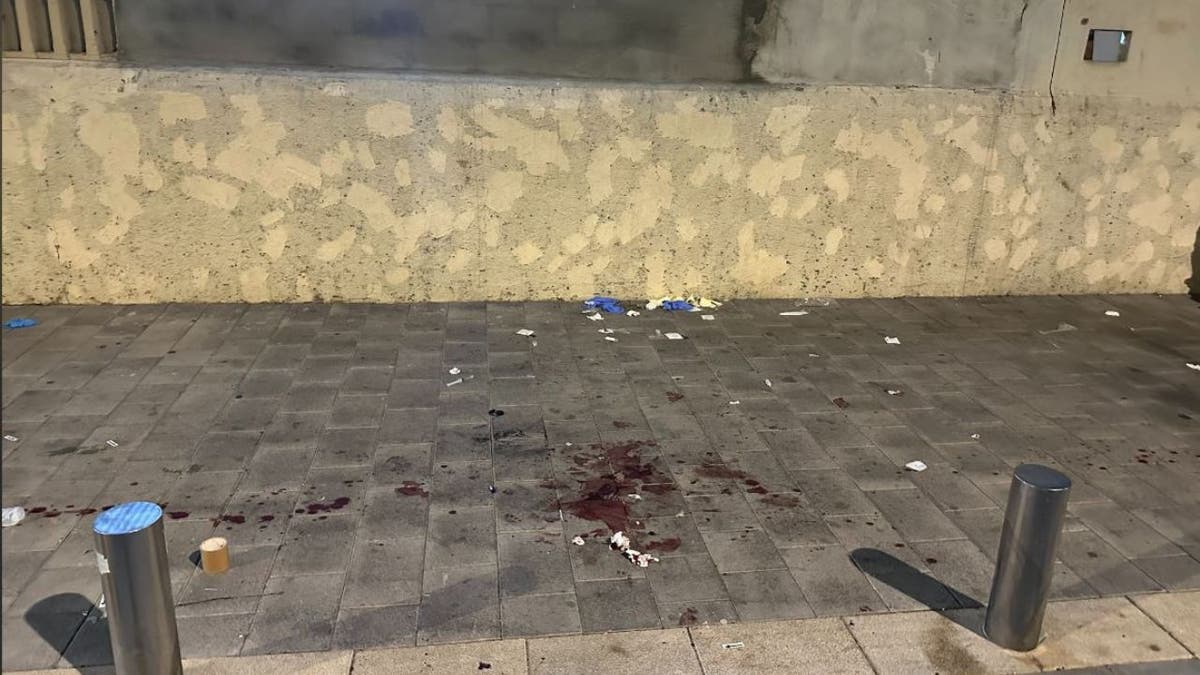
Graphic photo warning: Blood-stained streets where two terrorists killed 7 Israelis in the Tel Aviv area. (Nate Foy/Fox News)
“When the train stopped and opened its doors, the terrorists walked inside, began firing their automatic weapons, then stepped back out and continued their killing spree,” the Israeli Police International Spokesman, Dean Elsdunne, tells me.
US ON ALERT FOR POSSIBLE ‘VIOLENT EXTREMIST ACTIVITY’ ON AMERICANS ONE YEAR AFTER OCT. 7
“I even saw an image where the terrorists stood over a civilian who had clearly already been shot, and they continued shooting him,” he adds.
Seven people lost their lives in the attack.
My mind flashes back to what I witnessed 63 miles south of Tel Aviv, in the devastated city of Rafah in southern Gaza.
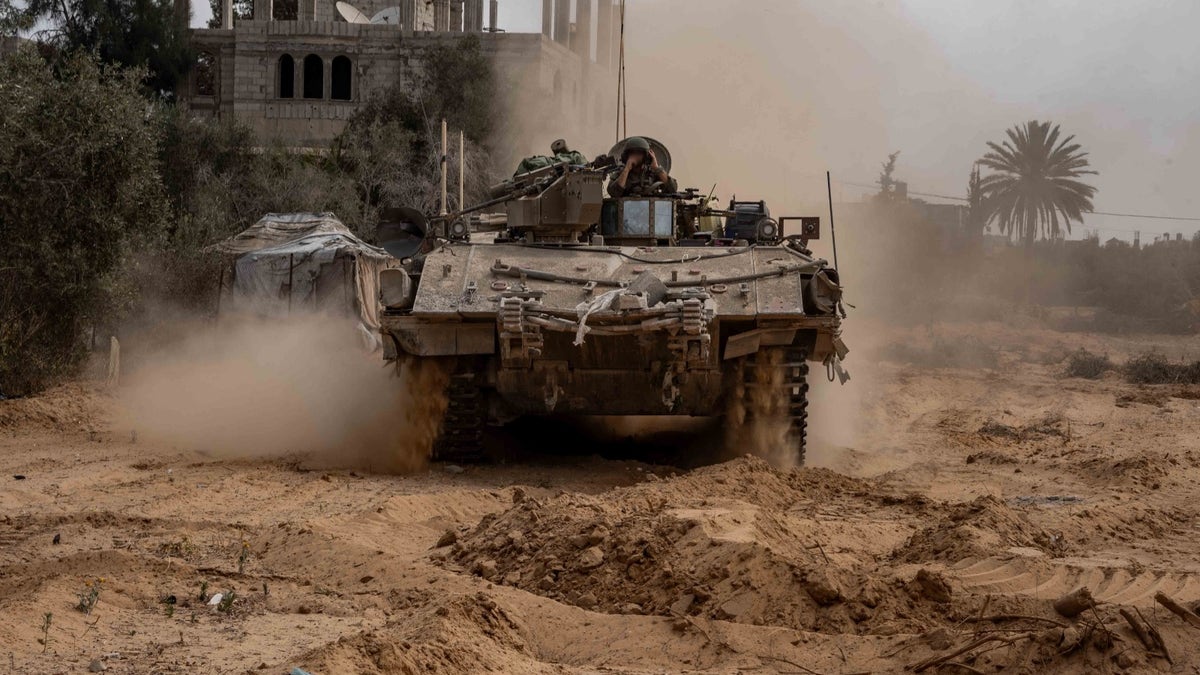
An Israeli armored vehicle in Rafah (IDF)
Weeks earlier, I had embedded with the IDF in the evacuated city, where soldiers exchanged gunfire with militants.
There wasn’t a single civilian in sight, but remnants of life before the war were scattered everywhere – a child’s superhero mask, clothes, household goods buried beneath the rubble from Israeli airstrikes.
A once-inhabited neighborhood is now a wasteland.
These are the costs of war.
Tens of thousands have died.
Millions are displaced.
And now, as the war enters its second year, the possibility of a major direct escalation with Iran looms on the horizon.

World
North Korea's Kim again threatens to use nuclear weapons against South Korea and US
SEOUL, South Korea (AP) — North Korean leader Kim Jong Un warned again that he could use nuclear weapons in potential conflicts with South Korea and the United States, as he accused them of provoking North Korea and raising animosities on the Korean Peninsula, state media reported Tuesday.
Kim has issued similar threats to use nuclear weapons preemptively numerous times, but his latest warning came as outside experts say North Korea could ramp up hostilities ahead of next month’s U.S. presidential election.
In a Monday speech at a university named after him, “Kim Jong Un University of National Defense,” he said that North Korea “will without hesitation use all its attack capabilities against its enemies” if they attempt to use armed forces” against North Korea, according to the North’s official Korean Central News Agency.
“The use of nuclear weapons is not ruled out in this case,” he said.
Kim said North Korea’s nuclear response posture must be fully enhanced because South Korea and the United States are pushing to beef up their military alliance based on joint nuclear and strategic planning, a move that he said would increase the danger of breaking the balance of power on the Korean Peninsula.
Kim apparently refers to the new South Korea-U.S. deterrence guideline that the two countries signed in July to integrate South Korean conventional capabilities with U.S. nuclear weapons to better deal with North Korea’s evolving nuclear threats. South Korea has no nuclear weapons.
Since adopting an aggressive nuclear doctrine in 2022, North Korea has repeatedly vowed to use nuclear weapons first if it perceives the leadership in Pyongyang as under threat. But many experts question if North Korea could really do so because its military is outgunned by the U.S. and South Korean forces. U.S. and South Korean officials have warned that an attempt by North Korea to use nuclear weapons would result in the end of the Kim government.
Tensions on the Korean Peninsula deepened in recent weeks, with North Korea unveiling a facility to produce weapons-grade uranium, a nuclear ingredient, and continuing a run of missile tests. In recent responses to questions from The Associated Press, South Korean President Yoon Suk Yeol said that North Korea’s disclosure of that facility was likely an attempt to grab U.S. attention ahead of next month’s presidential election, and the North will likely stage major provocations like a nuclear test explosion and a long-range missile test.
Many analysts say North Korea will likely leverage his enlarged nuclear arsenal for U.S. concessions like sanctions relief after a new U.S. administration is inaugurated.
North Korea earlier said its rubber-stamp parliament was to meet on Oct. 7. But as of Tuesday, state media hasn’t said whether the parliament meeting began as scheduled.
Observers say the parliament meeting was likely meant to constitutionally declare a hostile “two-state” system on the Korean Peninsula to formally reject reconciliation with South Korea and codify new national borders. In January, Kim ordered the rewriting of the constitution to remove the long-running state goal of a peaceful Korean unification and cement South Korea as an “invariable principal enemy.”
All exchange and cooperation programs between the two Koreas remain dormant since a broader U.S.-North Korea diplomacy on the North’s nuclear program collapsed in 2019.
Since late May, North Korea has floated thousands of trash-carrying balloons toward South Korea, reviving a Cold War-style psychological campaign. On Tuesday, South Korea’s military said North Korea was again launching such balloons across the border.
World
‘They tried to murder everyone’: Haiti reels after deadly gang attack

More than 6,200 people are staying with relatives or in makeshift shelters after massacre in central Haiti town.
Survivors of a deadly gang attack in central Haiti last week have described waking up to gunfire and walking for hours in search of safety, as the country continues to grapple in the aftermath of the assault that killed at least 70 people.
Dozens of Gran Grif gang members armed with knives and assault rifles killed infants, women, the elderly and entire families in their attack last Thursday on Pont-Sonde, about 100km (62 miles) northwest of Port-au-Prince in the Artibonite region.
“They tried to murder everyone,” Jina Joseph, a survivor, told The Associated Press news agency.
Jameson Fermilus, who had crouched in a corridor next to his house as smoke and gunfire filled the air, was among thousands of survivors who walked for hours, looking for safety.
“We don’t know what we are going to do,” said another resident who joined them, 60-year-old Sonise Morino. “We have nowhere to go.”
The massacre has underscored the deadly violence and instability gripping Haiti, where powerful armed groups have carried out attacks and kidnappings across the capital of Port-au-Prince and in other parts of the country.
The International Organization for Migration (IOM) said at least 6,270 people were displaced in the attack on Pont-Sonde. The vast majority have sought refuge with relatives and friends in nearby communities.
Others with nowhere to go have crowded into a church, a school and a public plaza shaded by trees in the coastal city of Saint-Marc.
“These deaths are unimaginable,” Mayor Myriam Fievre said as she met with survivors.
The attack – retribution for self-defence groups trying to stop the gang from erecting a toll on a nearby road – was the largest massacre in central Haiti in recent years.
It came just days after the United Nations reported that at least 3,661 people had been killed in Haiti in the first half of 2024 amid the “senseless” gang violence that has engulfed the country.
“To those who sow terror, I say this: You will not break our will,” Haiti’s interim Prime Minister Garry Conille said in a statement following the Pont-Sonde attack.
“You will not subjugate this people who have always fought for their dignity and freedom. We will never abandon our right to live in peace, security and justice.”
More than 6,000 people have been displaced following armed attacks in Pont-Sondé, a locality in Haiti situated in the commune of Saint-Marc, in the Artibonite department.
The majority have taken shelter with relatives in nearby localities.
👉 https://t.co/oBLDDVMoWI pic.twitter.com/AhA3d8iW0H
— IOM Haiti (@IOMHaiti) October 5, 2024
Yet, despite the defiant rhetoric, Conille late last month acknowledged that Haiti was “nowhere near winning” the battle against the gangs.
The UN Security Council recently extended the mandate of a Kenya-led policing mission meant to help restore security in the Caribbean nation, but the force has struggled to wrest control from the gangs.
Funding for the deployment – formally known as the Multinational Security Support Mission (MSS) – has lagged, and a UN expert said last month that the force remains under-resourced.
Conille has travelled to Kenya and the United Arab Emirates this week to push for additional help.
World
Explainer-The Electoral College and the 2024 US Presidential Race
-
/cdn.vox-cdn.com/uploads/chorus_asset/file/25439572/VRG_TEC_Textless.jpg)
/cdn.vox-cdn.com/uploads/chorus_asset/file/25439572/VRG_TEC_Textless.jpg) Technology5 days ago
Technology5 days agoCharter will offer Peacock for free with some cable subscriptions next year
-

 World4 days ago
World4 days agoUkrainian stronghold Vuhledar falls to Russian offensive after two years of bombardment
-

 World5 days ago
World5 days agoWikiLeaks’ Julian Assange says he pleaded ‘guilty to journalism’ in order to be freed
-

 Technology4 days ago
Technology4 days agoBeware of fraudsters posing as government officials trying to steal your cash
-

 Health2 days ago
Health2 days agoHealth, happiness and helping others are vital parts of free and responsible society, Founding Fathers taught
-

 Virginia6 days ago
Virginia6 days agoStatus for Daniels and Green still uncertain for this week against Virginia Tech; Reuben done for season
-

 Sports3 days ago
Sports3 days agoFreddie Freeman says his ankle sprain is worst injury he's ever tried to play through
-

 News2 days ago
News2 days agoLebanon says 50 medics killed in past three days as Israel extends its bombardment
